Various images related to Ganghwa Island and the expedition
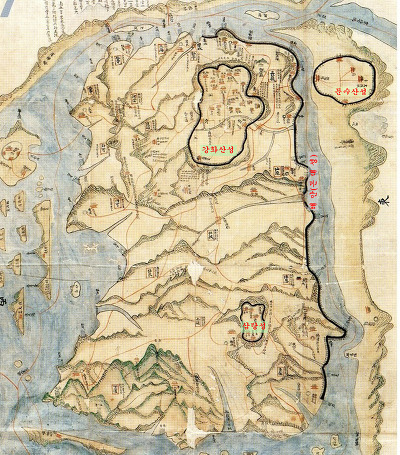
Ganghwa in the 18th century, edited recently to indicate in red the three fortified areas, Munsu-sanseong on the mainland, the walls surrounding Ganghwa township, and 정족산성 (삼 랑성) Jeongjok-sanseong (Samnang-seong) around 전 등사 Jeondeung-sa temple in the south, as well as Ganghwa Outer Fortification 강화 외성 : First built in the Goryeo period, 1233, after the Mongolian attack, 23 km long along the eastern (landward) coast of the island. Rebuilt and strengthened after the Manchurian attacks 1618 / 1636, reinforced and rebuilt with bricks in 1743. It had 6 main gates with pavilions 조해루·복 파루·진해루·참 경루·공조루·안 해루. .

The entrance to Ganghwa Island when coming from Seoul. See below next image
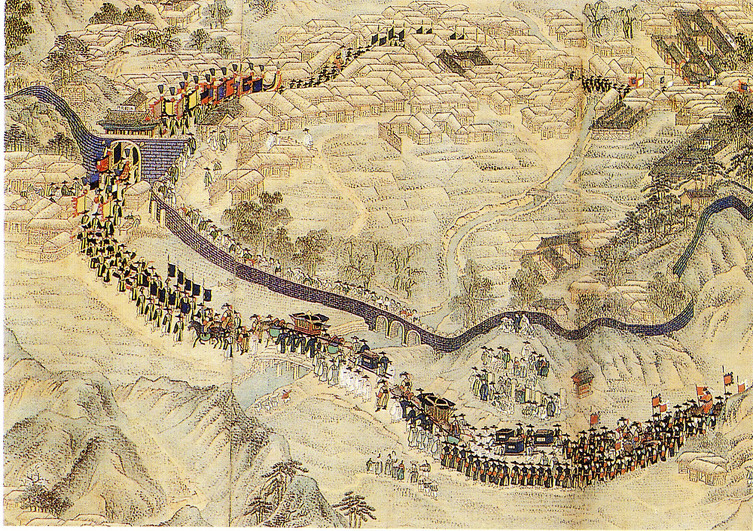
In 1849, the Korean court made a solemn procession to Ganghwa to bring to Seoul the new king, Cheoljong, who had until then been living in poverty and ignorance in Ganghwa. These images show the route toward the East Gate followed by the French in 1866.

The
fortress of Munsu
Sanseong (Fortress) at the top of the map includes on
the right the South Gate (usually called 喜雨樓 희우루Hui-u-ru)
where the French were ambushed. Jinhae-ru gate (鎭海樓) at
Gapkot Naru is directly opposite across the water.
The photos below show Jinhae-ru gate
(鎭海樓) at
Gapkot Naru (ferry) in 1876, and the recently
excavated remains. The French
landed here and some including Henri Zuber camped in
the houses around the gate in 1866.


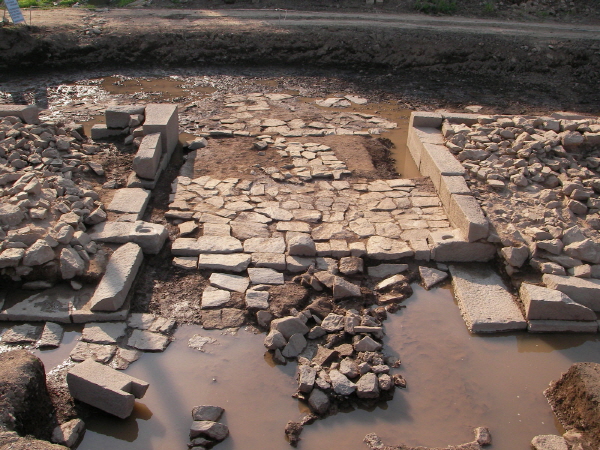
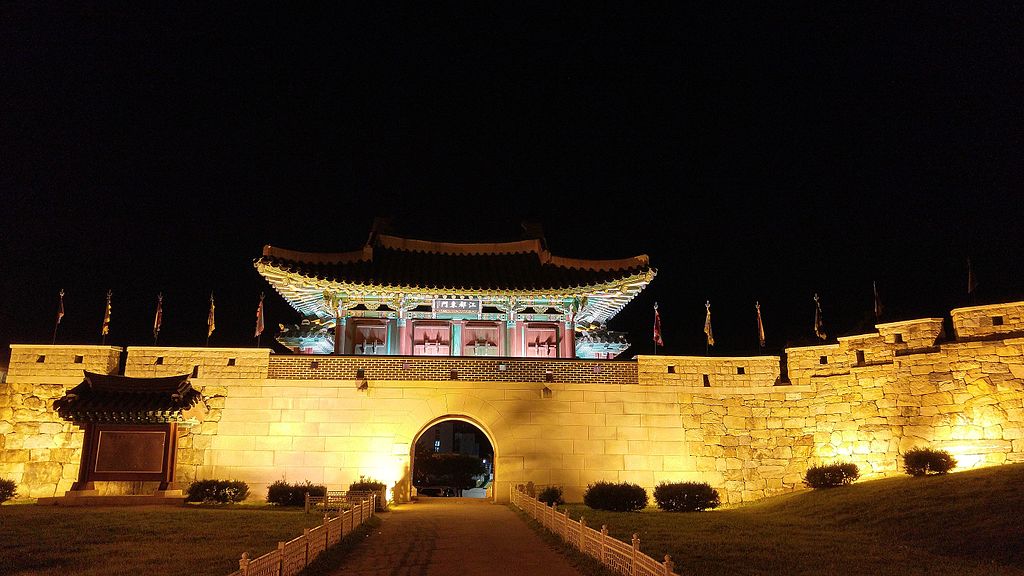
The reconstructed East Gate of the town, through which the French entered.
The official buildings

The royal palace (행궁 to the left) The Library ( 외 규장각 center) and local governor's offices (right)



La Guerrière at Nagasaki

La Laplace
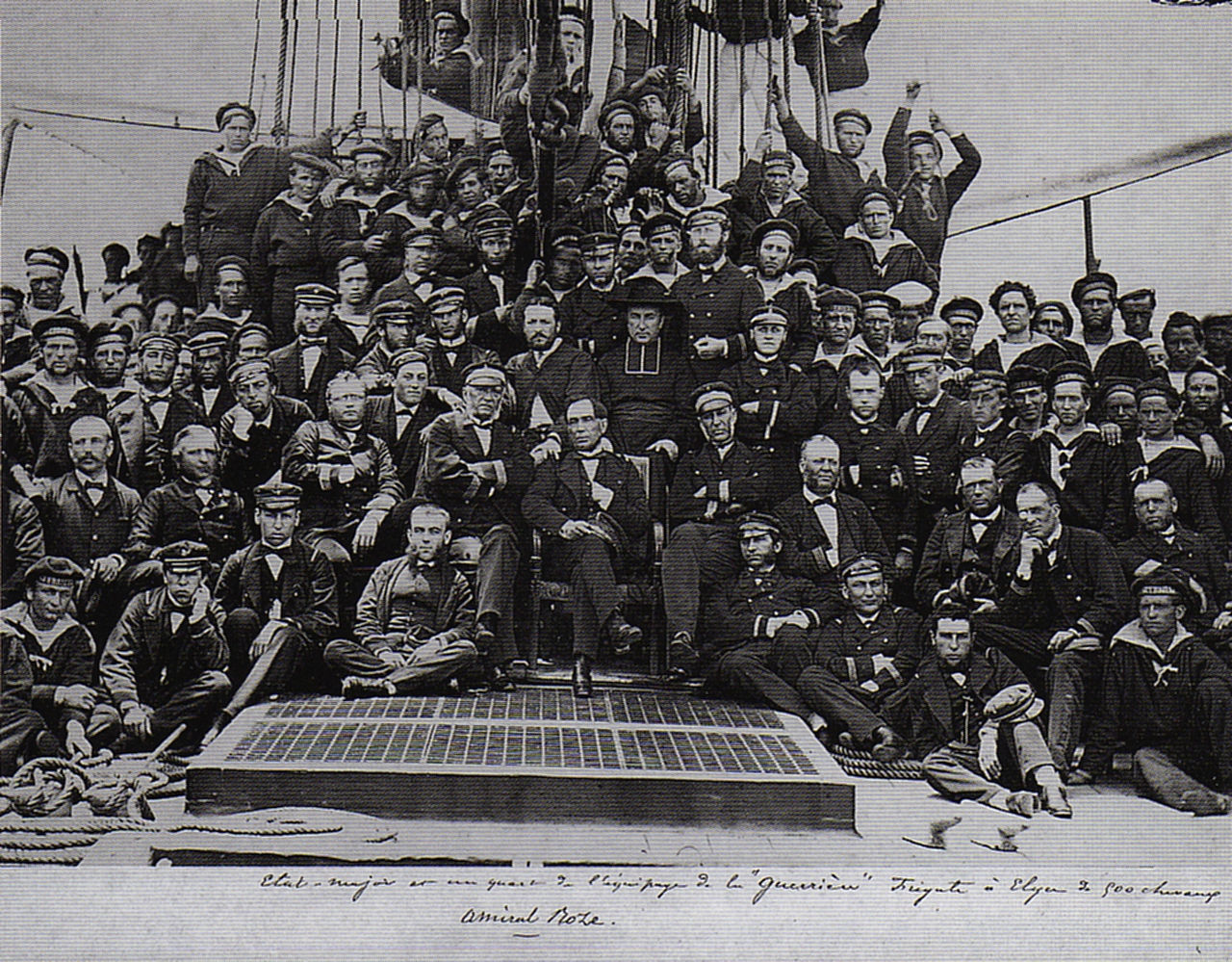
Admiral Roze and the crew of La Guerrière

A little
to the north of Gapkot landing lies the little temple
now called “Haeun-sa”
established in 1963 on the ruins of the temple of
martial monks known as
Jinhae-sa founded in 1692 that is said to have been
burned c. 1900 but was
ransacked if not burned by the French in 1866. Henri
Zuber, in his 1873 Tour du
Monde article, mentions the military materials
(gunpowder and a large quantity
of weapons) found in the temple’s storerooms and
describes in detail a painting
(of the Vulture Peak Sermon) he salvaged from the
looted temple hall and
(perhaps) took back to France.

The result of the 1866 survey of the Han River and the approach along the east coast of Ganghwa Island (Salt River)

A French chart from 1887 showing the amount
of detail
known at that time.
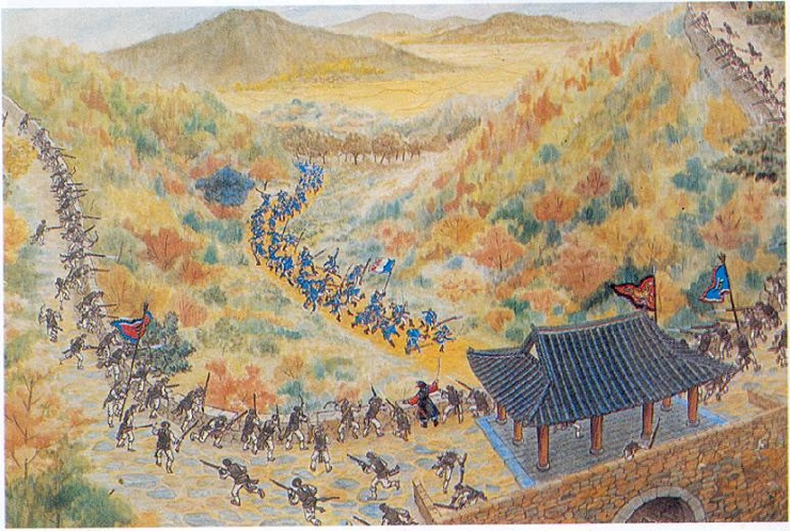
A
modern artist’s impression of the French being
ambushed at the fortress of 정족산성 (삼랑성)
Jeongjok-sanseong (Samnang-seong) around 전등사 Jeondeung-sa
temple on November 9.

The
South Gate held a bronze bell which the French tried
to transport to the shore
but abandoned along the way (Ganghwa History
Museum).

The
Daewongun had this 양헌수
승전비 (梁憲洙勝戰碑) Yang
Heon-su seungjeon-bi erected inside the
fortress walls to celebrate the
great victory of general Yang Heon-su of Joseon
against the French invaders.

경고비
Stone erected by the Daewongun to warn off foreign
attacks after the 1866
victory
海門防守他國船愼勿過 바다의
관문을 지키고 있으므로 외국 선박은 통과할 수 없다 Our
coasts are guarded, no foreign ships may pass